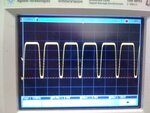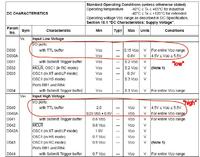Neyolight
Full Member level 5

Hi all
I want to use npn (BF199) to convert the sin wave from my oscillator to a digital wave ( of 2V PK-Pk).
At the moment I am getting something close to digital wave but with 1.6 V P-P.
The base of the npn has a sin wave at 124 KHz with 800mV p-p. The collector is connected to a voltage divider. The emitter goes to ground.
Any ideas as to how I can make my wave look square and increase the Vp-p .
Thanks
I want to use npn (BF199) to convert the sin wave from my oscillator to a digital wave ( of 2V PK-Pk).
At the moment I am getting something close to digital wave but with 1.6 V P-P.
The base of the npn has a sin wave at 124 KHz with 800mV p-p. The collector is connected to a voltage divider. The emitter goes to ground.
Any ideas as to how I can make my wave look square and increase the Vp-p .
Thanks




